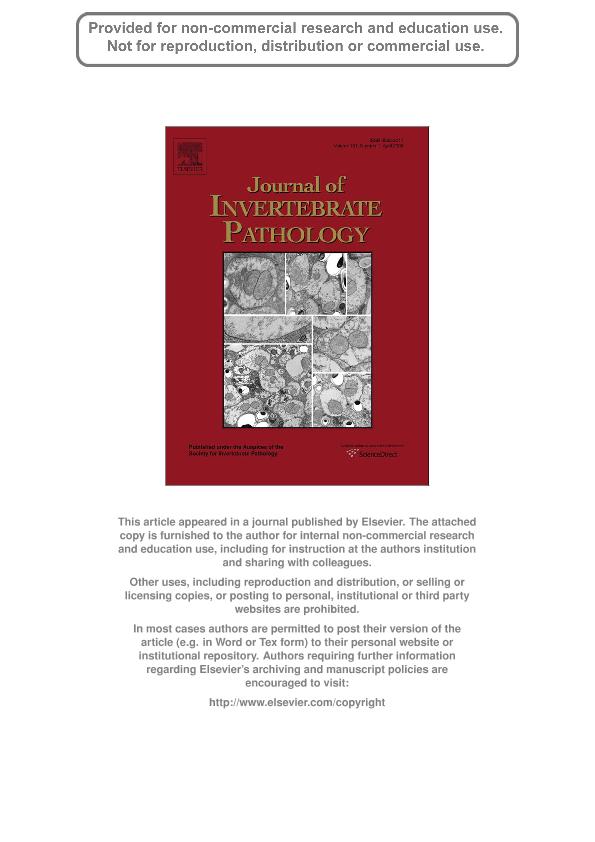Artículo
Morphology and taxonomy of the microsporidium Liebermannia covasacrae n. sp. from the grasshopper Covasacris pallidinota (Orthoptera, Acrididae)
Fecha de publicación:
04/2009
Editorial:
Academic Press Inc Elsevier Science
Revista:
Journal of Invertebrate Pathology
ISSN:
0022-2011
Idioma:
Inglés
Tipo de recurso:
Artículo publicado
Clasificación temática:
Resumen
During a survey for grasshopper pathogens in Argentina in 2005–2006, individual Covasacris pallidinota from halophylous grasslands in Laprida, Buenos Aires province were found to be infected with a microsporidium. Infection was restricted to the salivary gland epithelial cells. The microsporidium produced ovocylindrical spores averaging 2.6 ± 0.28 × 1.4 ± 0.12 μm (range 2.2–3.4 × 1.1–1.7 μm), which resembled in size and shape the spores of Liebermannia patagonica and L. dichroplusae, two recently described species that also parasitize Argentine grasshoppers. The life cycle of the microsporidium included the formation of polynucleate, diplokaryotic, moniliform, merogonial plasmodia wrapped in flattened cisterns of the host endoplasmic reticulum (ER). Plasmodia divided to produce diplokaryotic cells. The latter underwent elongation, dissociation of diplokarya counterparts, vacuolization, dismantling of the host ER envelope, and deposition of electron-dense material outside the plasma membrane. The resultant binucleate sporogonial plasmodia divided into two uninucleate sporoblasts, which eventually transformed into spores. Uninucleate spores contained a lamellar polaroplast, embraced by an elongated polar sac, anchoring disc, 3–5 polar filament coils, and a cluster of anastomizing tubules (sporoblast trans-Golgi, posterosome) at the posterior end. Sequence similarity of the SSU rDNA of the newly discovered microsporidium (Genbank accession no. EU709818) to L. patagonica and L. dichroplusae was 99% and 97%, respectively, suggesting that the three species belong to one genus. All three species fell into one clade in SSU rDNA-based phylogenetic trees produced by neighbor joining, maximum parsimony, and maximum likelihood analyses with 100% statistical support. We assign the name Liebermannia covasacrae to this microsporidium. It can be easily differentiated from both congeners by host species, tissue tropism, type of sporogony, and several features of morphology. Comparison of the three Liebermannia spp. demonstrates that the nuclear phase (dikaryotic versus monokaryotic spores) and type of sporogony (polysporous versus disporous) may vary in closely related species.
Palabras clave:
Acrididae
,
Argentina
,
Grasshopper
,
Covasacris pallidinota
Archivos asociados
Licencia
Identificadores
Colecciones
Articulos(CEPAVE)
Articulos de CENTRO DE EST.PARASITOL.Y DE VECTORES (I)
Articulos de CENTRO DE EST.PARASITOL.Y DE VECTORES (I)
Citación
Sokolova, Yuliya Y.; Lange, Carlos Ernesto; Mariottini, Yanina; Fuxa, James R.; Morphology and taxonomy of the microsporidium Liebermannia covasacrae n. sp. from the grasshopper Covasacris pallidinota (Orthoptera, Acrididae); Academic Press Inc Elsevier Science; Journal of Invertebrate Pathology; 101; 1; 4-2009; 34-42
Compartir
Altmétricas




